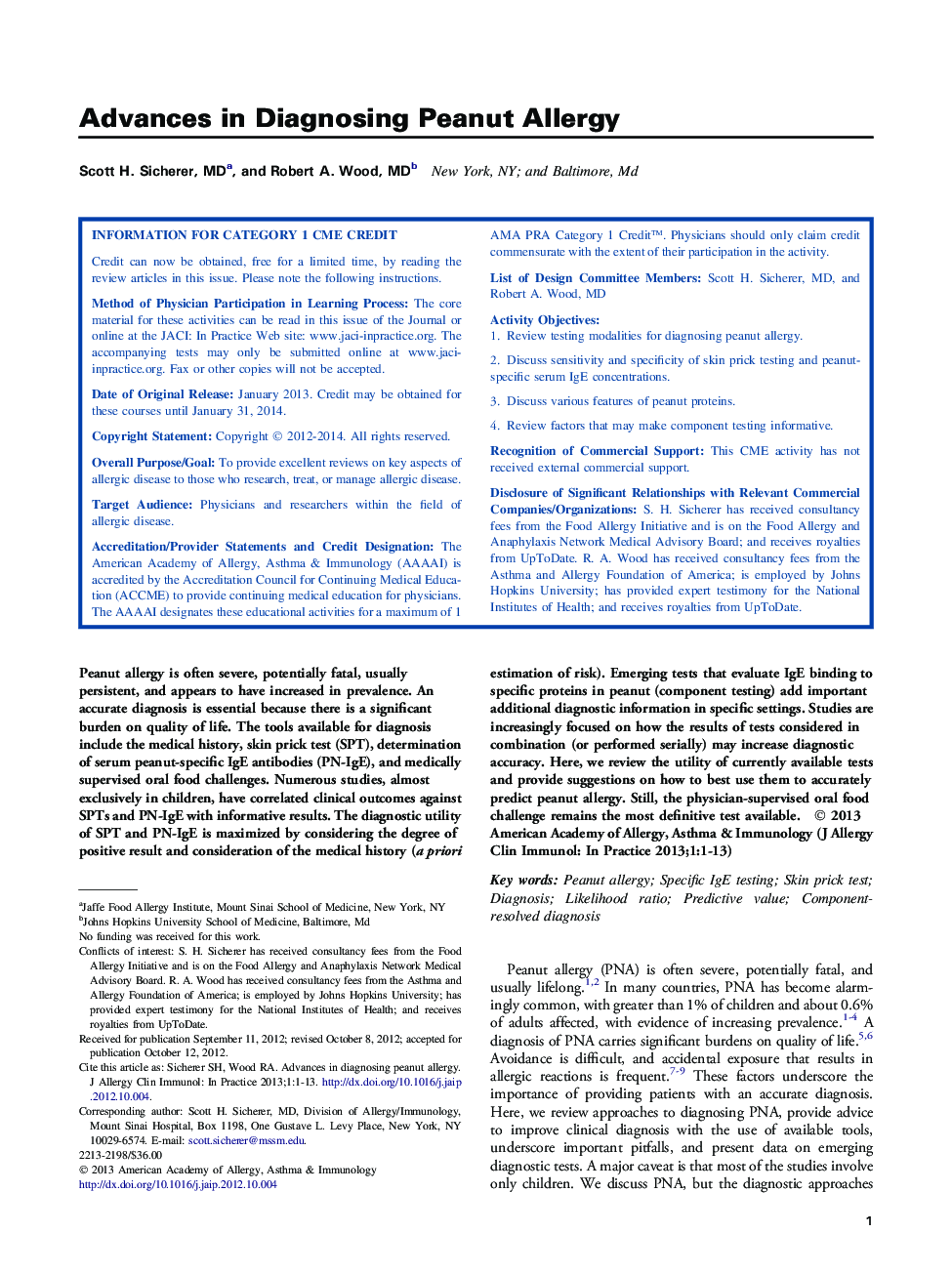| Article ID | Journal | Published Year | Pages | File Type |
|---|---|---|---|---|
| 3204336 | The Journal of Allergy and Clinical Immunology: In Practice | 2013 | 13 Pages |
Abstract
Peanut allergy is often severe, potentially fatal, usually persistent, and appears to have increased in prevalence. An accurate diagnosis is essential because there is a significant burden on quality of life. The tools available for diagnosis include the medical history, skin prick test (SPT), determination of serum peanut-specific IgE antibodies (PN-IgE), and medically supervised oral food challenges. Numerous studies, almost exclusively in children, have correlated clinical outcomes against SPTs and PN-IgE with informative results. The diagnostic utility of SPT and PN-IgE is maximized by considering the degree of positive result and consideration of the medical history (a priori estimation of risk). Emerging tests that evaluate IgE binding to specific proteins in peanut (component testing) add important additional diagnostic information in specific settings. Studies are increasingly focused on how the results of tests considered in combination (or performed serially) may increase diagnostic accuracy. Here, we review the utility of currently available tests and provide suggestions on how to best use them to accurately predict peanut allergy. Still, the physician-supervised oral food challenge remains the most definitive test available.
Related Topics
Life Sciences
Immunology and Microbiology
Immunology
Authors
Scott H. MD, Robert A. MD,
